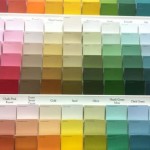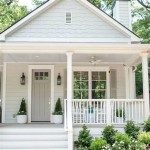Exterior Paint Outside House Painting Colour Combinations: A Comprehensive Guide
The selection of exterior paint colours for a house is a critical decision that significantly impacts curb appeal and overall property value. The exterior paint not only protects the home from the elements but also reflects the homeowner's style and personality. A well-chosen colour combination can enhance architectural features, harmonize with the surrounding landscape, and create a welcoming and aesthetically pleasing facade. This article provides a detailed exploration of exterior paint colour combinations, offering practical advice and illustrating with examples how to achieve stunning results.
Factors to consider when choosing exterior paint colours are numerous and complex. They include the architectural style of the house, the climate, the surrounding environment, and personal preferences. Furthermore, the colour of the roof, the material of the siding, and the landscaping all play a role in determining the most suitable colour palette. Navigating these considerations requires a thoughtful and informed approach to ensure a cohesive and attractive outcome.
A successful exterior paint scheme typically involves a combination of three colours: a dominant body colour, a trim colour, and an accent colour. The body colour covers the majority of the house's exterior surfaces, such as the siding. The trim colour is used for architectural details like window frames, door frames, eaves, and fascia boards. The accent colour is reserved for focal points such as the front door, shutters, or other decorative elements. The strategic use of these three colours can create visual interest and highlight the house's best features.
Understanding Colour Theory
A fundamental understanding of colour theory is essential for creating harmonious and visually appealing exterior colour schemes. Colour theory encompasses the relationships between colours, including the colour wheel, colour harmonies, and the psychology of colour. The colour wheel is a visual representation of colours arranged according to their chromatic relationships. Colour harmonies are combinations of colours that are considered aesthetically pleasing when used together. The psychology of colour refers to the emotional and psychological effects that different colours can evoke.
Complementary colours are colours that sit opposite each other on the colour wheel, such as blue and orange, or red and green. When used together, complementary colours create a high-contrast, vibrant effect. Analogous colours are colours that are adjacent to each other on the colour wheel, such as blue, blue-green, and green. Analogous colour schemes create a harmonious and calming effect. Triadic colours are three colours that are evenly spaced on the colour wheel, such as red, yellow, and blue. Triadic colour schemes are bold and dynamic.
The use of neutral colours as a base allows for more flexibility with trim and accent colours. Neutral colours, such as white, gray, beige, and brown, offer a timeless and versatile backdrop that can be easily paired with a wide range of other colours. When selecting neutral colours, it's important to consider the undertones, which can be warm or cool. Warm neutrals, such as beige and cream, have yellow or orange undertones, while cool neutrals, such as gray and white, have blue or green undertones.
The psychology of colour can also influence the choice of exterior paint colours. For example, blue is often associated with calmness and serenity, while yellow is associated with happiness and energy. Green is associated with nature and growth, while red is associated with passion and excitement. Understanding the psychological effects of different colours can help homeowners create an exterior that reflects their desired mood and style.
Architectural Styles and Colour Combinations
The architectural style of a house is a significant factor in determining the most suitable exterior colour palette. Different architectural styles lend themselves to different colour schemes, and choosing colours that complement the architectural features can enhance the overall aesthetic appeal of the house.
For example, Victorian-style houses typically feature intricate architectural details, such as elaborate trim, decorative brackets, and ornate porches. These houses often benefit from a multi-colour scheme that highlights these details. Popular colour combinations for Victorian houses include shades of cream, beige, or gray as the body colour, with contrasting trim colours such as burgundy, forest green, or navy blue. Accent colours such as gold or copper can be used to highlight specific architectural features.
Craftsman-style houses, on the other hand, typically feature natural materials, such as wood and stone, and a simple, understated design. These houses often look best with earth-toned colours that complement the natural materials. Popular colour combinations for Craftsman houses include shades of brown, green, or beige as the body colour, with contrasting trim colours such as white or cream. Accent colours such as red or orange can be used to add a pop of colour.
Modern-style houses often feature clean lines, minimalist design, and large windows. These houses often look best with a monochromatic colour scheme or a combination of neutral colours. Popular colour combinations for modern houses include shades of gray, white, or black as the body colour, with contrasting trim colours such as white or black. Accent colours such as bright red or yellow can be used to add visual interest.
Ranch-style houses often feature a low-pitched roof, a single story, and a sprawling floor plan. These houses often look best with a warm and inviting colour scheme that complements the horizontal lines. Popular colour combinations for Ranch houses include shades of beige, cream, or light brown as the body colour, with contrasting trim colours such as white or a darker shade of brown. Accent colours such as turquoise or coral can be used to add a touch of personality.
Practical Considerations and Tips
Beyond colour theory and architectural style, there are several practical considerations to keep in mind when choosing exterior paint colours. These considerations include the climate, the surrounding environment, and the durability of the paint.
In hot and sunny climates, lighter colours are often preferred as they reflect more sunlight and help to keep the house cooler. Darker colours absorb more sunlight and can cause the house to heat up, which can increase energy costs. In colder climates, darker colours can help to retain heat and make the house feel warmer.
The surrounding environment should also be considered when choosing exterior paint colours. If the house is located in a wooded area, earth-toned colours such as brown, green, or beige can help to blend the house with the natural surroundings. If the house is located in a more urban area, brighter or more vibrant colours can help to make the house stand out.
The durability of the paint is also an important consideration. Exterior paint should be able to withstand the elements, including sun, rain, and wind. High-quality exterior paint will last longer and require less frequent repainting. It is crucial to choose a paint that is specifically formulated for exterior use and that is resistant to fading, cracking, and peeling.
Before committing to a particular colour scheme, it is advisable to test the colours on a small area of the house. Paint a sample area and observe how the colours look at different times of the day and in different lighting conditions. This will help to ensure that the chosen colours are the right fit for the house and the surrounding environment.
Furthermore, it is beneficial to consider the opinions of neighbors and local homeowners' associations. Some neighborhoods have restrictions on the types of colours that can be used for exterior painting. Checking with the homeowners' association before painting can help to avoid potential conflicts and ensure compliance with local regulations.
Finally, the selection of exterior paint colours should be a collaborative process involving all members of the household. This will help to ensure that everyone is happy with the final result and that the house reflects the collective style and personality of the family. By carefully considering all of the factors involved, homeowners can create an exterior that is both aesthetically pleasing and functional.

68 Home Exterior Paint Color Ideas For A Fresh Look

15 Best Colour Combination For House Exterior

Exterior Paint Colors

Best 400 House Painting Colours Outside 2025 Top Exterior Wall Paint Ideas Color Combinations

15 Best Colour Combination For House Exterior

Exterior House Paint Ideas The Home Depot

7 Unusual Exterior Paint Colour Combinations For Homes

100 House Painting Colours Outside 2024 Exterior Wall Paint Color Combinations Ideas Colour 4

Exterior Paint Colors Scheme Inspiration Kimberly Painting

7 Exterior House Paint Design Ideas Beautiful Homes
Related Posts








